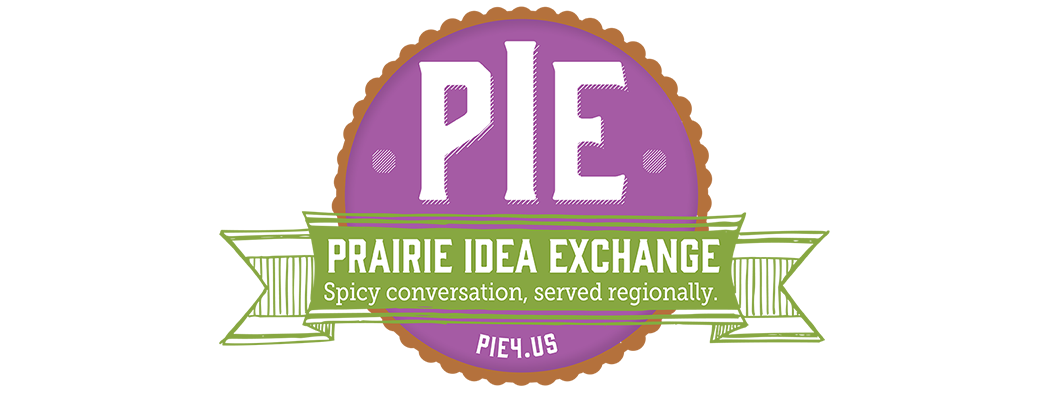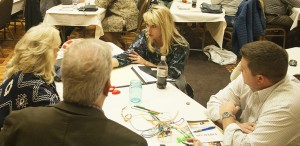PIE participants agreed that while regional collaboration is a good idea in theory, and often fun in practice, seeing measurable results can be tough.
Information sharing “is great, and the networking is easy, but the actual collaboration at the end is difficult,” said Rita Anderson, economic development director in DeSmet, S.D.
Buddy Seiner, community development coordinator for the South Dakota Community Foundation, echoed her sentiment. He said he wondered sometimes whether regional efforts are truly making progress.
“Are you actually working?” he asked. “People come together (and) sometimes they think they’re working, (but) they might not move anywhere, or they might not have a common goal, or they might not make any positive ground.”
The aspect that he sees as lacking is defining the goal for the regional effort, and making sure it’s a goal that can be evaluated.
“I see that as a challenge if we come together to make our region better—to actually try and have a common goal and be able to measure it and determine if you are successful or not,” Seiner said. “Sometimes nothing gets done and it’s a waste of everyone’s time.”
Participants identified a number of difficulties facing those engaged in regional collaboration, which can be lumped into three categories: challenges in structure, people and mindset.
Structural challenges
Distance between communities can make it harder to meet on a regular basis in order to plan projects and build relationships. Implementation, too, can be difficult when communities are not immediate neighbors, and finding space to hold events for the collaboration can cause friction if it seems like some members are being inconvenienced more than others.
Funding for regional projects typically is not part of any existing funding structure. Regional projects are often situational, and for a limited time period. Collaborators can’t look to one town’s or even one county’s coffers to fund a regional effort, and even projects with multiple funding sources are hard to pull off—it is sometimes hard for local decision-makers to see why spending on regional projects should be part of their responsibility.
Communication can falter when working with multiple entities that have their own overall goals and functions. Key players in the collaborative effort can face challenges in finding the time to effectively converse about the work that needs to be done, and some details may be dropped between other day-to-day tasks when project teammates are, essentially, out of sight and out of mind.
Connecting the right people
Champions can be hard to find when stepping outside pre-established community groups. Often, in the beginning, only the core group of organizers can see the need for collaboration and its motives.
Buy-in from the entities that support individual communities’ projects can be hard-earned until a proven track record for successful collaboration has been developed.
Relationships/trust take time to develop—particularly among people from communities that may have historically viewed themselves as competitors.
Mindset
Reluctance to change can be a challenge in getting people in the region to move forward—but it can also be a challenge within the regional collaboration team, as regional efforts require different ways of working that some team members may have to adjust to. For example, phone conferences may become a necessity if the group can’t meet in person often enough to move a project forward.
Perception of benefits and risks can vary from one entity to another. “If we’re going together as a region … one community might say, ‘Well, what if they get more of a benefit than we are going to have? I don’t know if we want to work together,’” said Paula Jensen of Langford, S.D.
Agendas—both personal and political—can conflict between individuals, businesses and even communities. These agendas may or may not directly impact the work that is to be done, but still can create a mental barrier to collaboration.
Competitive spirit can make people reluctant to work together if they see themselves as competing for a bigger slice of the pie instead of working together to increase the size of the pie overall.
Failures of the past can cloud collaborators’ perceptions of what is possible. Working together well regionally is an art. In many cases, the first attempt can be a little rocky. It’s important that those engaged in the work not lose sight of what can happen when those experiences are viewed as growth opportunities, rather than as proof that working together is “impossible.”
 Dakotafire Get your spark here.
Dakotafire Get your spark here.





